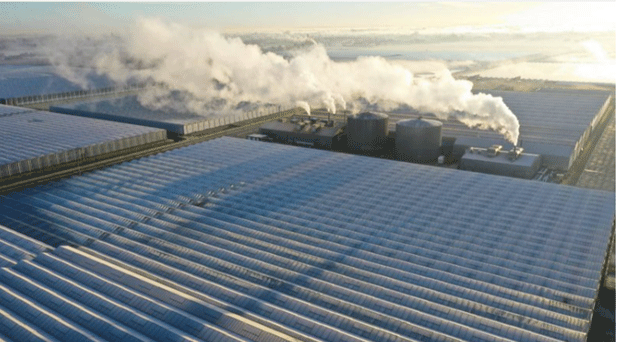During the recent GreenTech horticulture trade fair in Amsterdam, demissionary Minister Piet Adema of Agriculture, Nature, and Food Quality highlighted the integral role of greenhouse farming in the Netherlands. While acknowledging the sector’s significant energy consumption, Adema emphasized its high added value and productivity, crucial for a small and densely populated country like the Netherlands.
High Efficiency and Productivity
Greenhouse farming in the Netherlands is renowned for its efficiency and high yields. The ability to grow crops on multiple layers within a controlled environment allows for optimal use of limited space. According to Adema, this makes greenhouses an invaluable asset, especially given the country’s limited agricultural land and the pressures on natural resources.
“Despite the energy consumption, the high added value and proximity to large markets make greenhouses indispensable to Dutch agriculture,” Adema stated. This sentiment is echoed by the statistics showing that greenhouse horticulture contributes significantly to the Netherlands’ agricultural output. The sector produces a wide range of crops, including vegetables, fruits, and flowers, with an estimated production value of over €7 billion annually.
Reducing Chemical Use and Enhancing Sustainability
Minister Adema also stressed the need to reduce chemical usage in food production, a challenge that greenhouse farming is well-equipped to tackle. Modern greenhouses utilize integrated pest management systems and biological controls, reducing the reliance on chemical pesticides. This approach not only benefits the environment but also enhances food safety and quality.
Innovations in greenhouse technology, such as LED lighting and advanced climate control systems, have further improved energy efficiency and sustainability. The use of renewable energy sources, such as geothermal and solar power, is becoming more prevalent, helping to mitigate the sector’s energy footprint.
Addressing Labor Shortages with Robotics
One of the significant challenges facing the greenhouse sector is labor shortages. Adema pointed out that advancements in robotics could provide a solution by automating repetitive tasks, reducing the need for manual labor and the dependence on migrant workers. “Robotics can significantly alleviate labor shortages by handling routine work, allowing for more efficient and scalable operations,” he explained.
The implementation of robotic systems in greenhouses is already showing promising results. Automated harvesting robots, precision irrigation systems, and AI-driven crop monitoring tools are enhancing productivity and reducing operational costs.
The Ministry’s New Focus
Adema also touched on the recent renaming of his ministry to the Ministry of Agriculture, Fisheries, Food Security, and Nature (LVVN). While horticulture is not explicitly mentioned in the new name, Adema assured that the sector remains a priority. “Horticulture can manage its own challenges, and we are committed to supporting its growth and sustainability,” he said.
Greenhouse farming continues to be a cornerstone of Dutch agriculture, balancing the high energy costs with exceptional productivity and efficient land use. By embracing technological innovations and sustainable practices, the sector is well-positioned to meet future challenges and continue its vital role in feeding both local and global populations.










